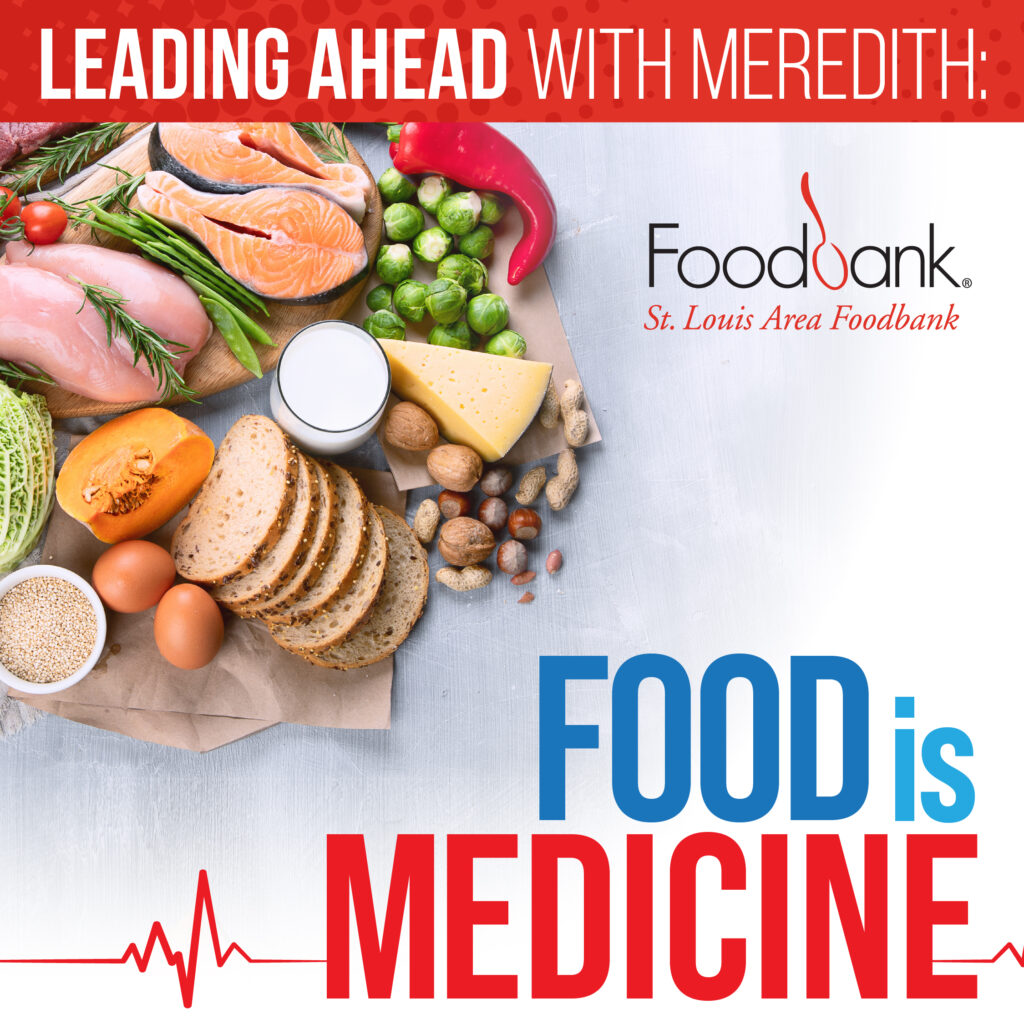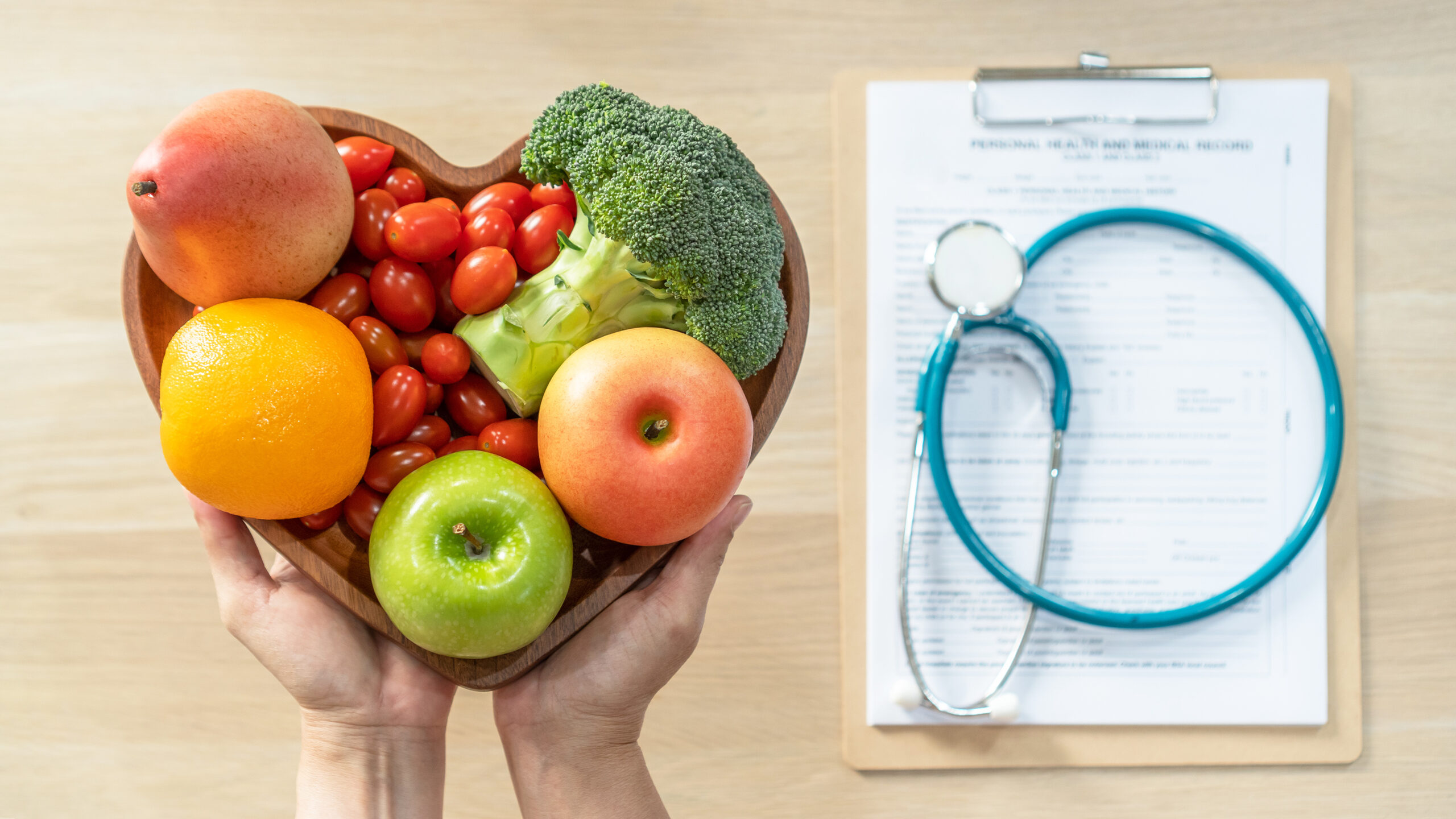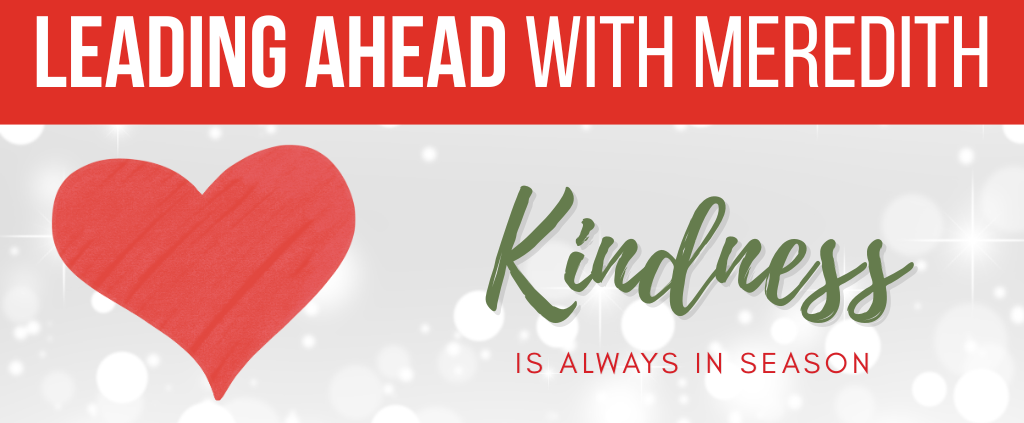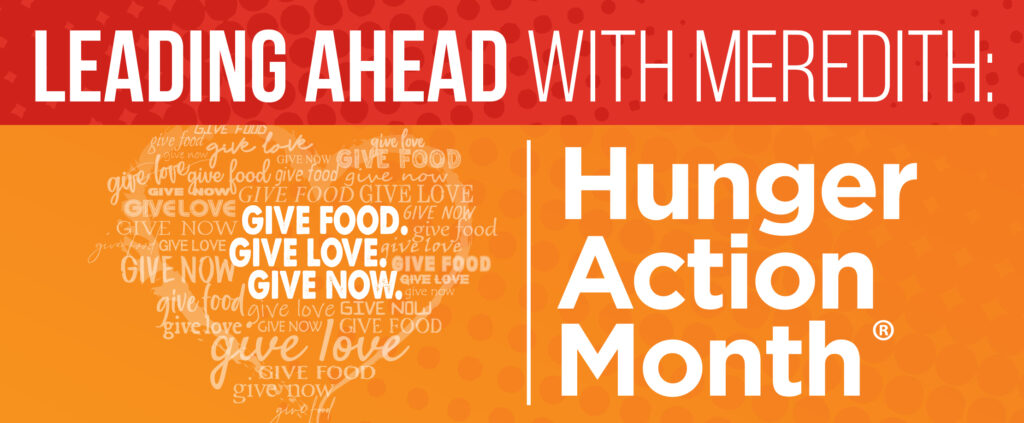
Food is Medicine
Meredith Knopp
As we move into October, Hunger Action Month ends, and our conversation shifts from food insecurity awareness to the work and initiatives we are pursuing. I particularly want to focus on thinking of food in a slightly different way – as medicine.
We all have heard the old phrase, “You are what you eat.” Well, if this is the case, as I look in my office snack drawer and read the labels on my breakfast biscuits, in addition to “rolled oats, rye flakes, cinnamon, and sugar,” I am also made of Niacinamide, Ferric orthophosphate, and Datem. Some of these ingredients are familiar, and some I’m not sure I would pronounce correctly. Yikes!

Education about the types of foods we provide, and a laser focus on healthy and nutritious foods is an organizational key performance indicator at the St. Louis Area Foodbank. We are measuring and tracking all food that comes in and out of the Foodbank and assessing it against H.E.R. guidelines. For those less familiar with H.E.R., this stands for Healthy Eating Research. This research categorizes food by type and puts it into one of three categories. Green means choose often, yellow means choose sometimes, and red means choose rarely. Foods are grouped based on various characteristics, including saturated fat, sodium, and added sugar. The guidelines are based on evidence linking increased consumption of these types of foods to increased risk for diet-related chronic diseases, such as obesity, diabetes, hypertension, and cardiovascular disease.
This information is important, but deploying it is critical to our vision of a nutritionally secure Missouri and Illinois. To that avail, last year, our team worked tirelessly to ensure every single item that comes into our facility is rated and ranked according to this system. Then, we began rolling out this system to our partners, creating a “healthy pantries” program to ensure we were educating everyone about the foods that they were offered. Most recently, our beautiful Food on the Move (FOTM) trailers also received a makeover. Now, green foods are labeled and placed at eye level to encourage neighbors to take them first. Yellow foods are labeled and placed on the middle shelves. These are considered “nudges” designed to encourage easy access to nutritious foods. After much consideration and speaking with other Foodbanks and partners, we decided not to “highlight” red foods on the shelves. Posters are displayed in the trailer to show the “stoplight” and what it means. All “red” or unranked foods have gray shelf tags and are placed on the lowest shelf. This is to avoid placing guilt or shame around “red” foods – because, let’s be honest, we like the red foods. We want to keep the highlight on the green and yellow foods and encourage neighbors to take those first. Our Food on the Move trailers look great with the new signage, and we are thrilled to help educate and instill healthy choices throughout the bi-state region.
H.E.R is just one way the St. Louis Area Foodbank is helping strengthen our region by strengthening the nutritional availability and education of the neighbors we serve. Another way that food as medicine shows up is with our partnerships with healthcare leaders, such as SSM Health. Our food as medicine initiative is now present within seven SSM Health hospitals, screening all patients at intake. This innovative partnership assists with the immediate need by providing nutritious foods when patients leave the hospital and provides long-term connections to nutritional resources through support and navigation for up to three months after discharge.

Along with their hospital pantries, SSM Health hosted 18 drive-through food distribution events at 7 hospital locations, serving 2,600 households with more than 9,000 individuals. We are proud of this partnership with SSM Health and look forward to continuing to expand this model with other providers in the area.
Great Mines Health Center also utilizes a similar approach to SSM Health within a healthcare clinic. GMHC screens patients attending general wellness checks to gather data about food insecurity, nutritious eating, and general feelings of physical well-being. This screening opens the opportunity to provide patients with access to the clinic’s on-site food pantry. It also builds the foundation through our partnership to provide more specific nutrition support tailored to their medical needs. Currently, patients identified as food insecure receive support for up to three months.
We are also working on additional pilot programs with some new partners, including cooking classes, recipes, and ways to make cooking at home fun and healthy. For more information about our Health and Wellness initiatives, please get in touch with Jenny Duez at jduez@stlfoodbank.org.
We are proud of our focus on health and nutrition at the St. Louis Area Foodbank, and we look forward to learning more about it and growing even more in the days and months to come. To learn more about our strategic vision or become involved in our work, please visit: https://stlfoodbank.org.


